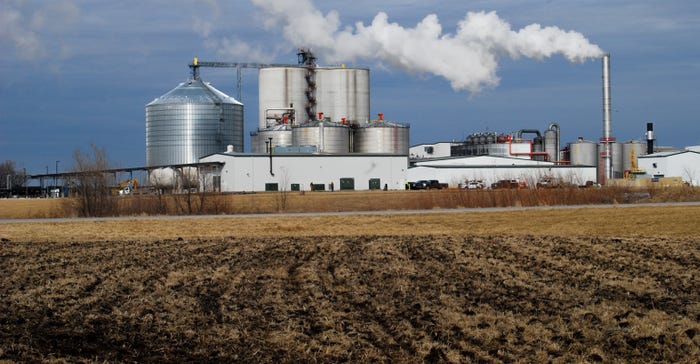May 4, 2018

Editor’s note: Many of you will recognize our guest columnist. He is John Otte, longtime former economics editor for Farm Progress publications. Producers who have tariffs levied against their products in the current trade dispute between the United States and China see immediate negative effects. However, as Otte points out, potentially unintended consequences may also occur.
By John Otte
President Donald Trump earlier this year announced intentions to levy stiff tariffs on steel and aluminum being imported to the United States. Various countries sought and were granted exemptions from the proposed tariffs. It eventually became clear that the Trump administration was using tariffs to pressure China to stop engaging in what the president views as unfair trade practices.
A tit-for-tat tariff tussle ensued. Now a host of U.S. farm exports — pork, soybeans, ethanol and grain sorghum, to name a few — face potentially stiff tariffs going into China. Tariffs would boost prices on those products entering that country. Our export volume of these products would drop. That’s bad news for U.S. agriculture.
Some win, some lose
Trade disruptions, such as tariffs and embargoes, eventually create winners and losers. Winners can turn into losers over time. Losers can turn into winners over time. Tariffs change the relative costs of sourcing products from various suppliers, which can trigger changes in export market share among producers. Embargoes raise questions about reliability of current suppliers.
Suppose that before a trade disruption, the market was operating efficiently. That is, the end users were sourcing product from the supplier that had the lowest production plus transportation cost. Further suppose a trade disruption prompts, or forces, end users to source product from higher-cost suppliers. Cost to end users rises. The eventual net result is consumers are losers.
The path to reach the new equilibrium can cause dramatic price gyrations and erratic product volume flows.
U.S. has history of using trade as policy lever
The U.S. has initiated previous trade disputes. In June 1973, the U.S. imposed export controls on U.S. soybeans, cottonseed, and their meals and oils in a move intended to prevent shortages of U.S. livestock feed and rein in price hikes. Japan used large quantities of imported soybean products for human consumption. The Asian importer questioned the reliability of the U.S. as a food supplier. Japan invested heavily in Brazil to develop alternative supplies, prompting some to view the embargo as the “Brazilian agricultural development act.”
In October 1973, a coalition of Arab nations led by Egypt and Syria fought Israel in what became known as the Yom Kippur war. The U.S. and Britain backed Israel. In response, the Arab Organization of Petroleum Exporting Countries (OPEC) initiated an embargo on oil exports to the U.S. Oil prices here skyrocketed. Some view that embargo as the “U.S. corn-based ethanol development act.” It took 45 years, but ethanol now consumes more U.S. corn than livestock do. And every political campaign contains rhetoric to push for energy independence.
 OPEC LAUNCHED ETHANOL: Without the 1973 Arab oil embargo, the U.S. corn ethanol industry certainly would have developed at a slower pace — and may not have developed at all.
OPEC LAUNCHED ETHANOL: Without the 1973 Arab oil embargo, the U.S. corn ethanol industry certainly would have developed at a slower pace — and may not have developed at all.

In 1980, President Jimmy Carter announced a partial embargo on grain exports to the Soviet Union in response to the Soviet invasion of Afghanistan. In the U.S., grain prices tumbled. Although the embargo was only one piece of the puzzle, for many years farmers blamed the embargo for triggering the farm financial crisis of the mid-1980s.
Competitors see opportunity
I was in Brazil late last year. Trump was pushing to establish tariffs on goods crossing the U.S.-Mexican border. He wanted to generate revenue to pay for his proposed border wall. I sensed that Brazilian agriculturists expected such tariffs to boost the prices of U.S. goods going into Mexico relative to prices for Brazilian products. They viewed that tariff talk as the “South American agricultural development act of 2017.” Brazilians and Argentinians likely view today’s tit-for-tat trade tussle with China as the “South American agricultural development act of 2017 — Phase 2.”
Earlier this year in the trade spat with China, Trump announced tariffs on imports of steel and aluminum. It is U.S. steel and aluminum producers who stand to gain, as the tariffs boost the price of imported steel and aluminum, making U.S. steel and aluminum more price-competitive. Steel and aluminum are inputs for all kinds of products, including farm machinery, grain bins, livestock equipment, etc. Higher input prices boost production costs, which eventually trickle down to become higher prices for end users.
China needs soybeans
Short-term U.S. consumers may gain from the tariff spat with China. A price slump for grains, oilseeds and livestock products can soften retail food prices.
Some see a soybean price dip as short-lived. Their logic: China buys about 60% of world soybean imports. As China seeks alternative supplies, U.S. soybeans can step in and supply markets that otherwise would have been filled with beans from competing suppliers.
End users may pay a bit more for products. Total trade volume may ease a bit in response to higher prices. Export shares among producers may shift a bit. The Trump administration views those effects as a small price to pay to hold China accountable for years of unfair trade practices.
Where will protection money come from?
U.S. Secretary of Agriculture Sonny Perdue says, “We remain committed to protecting American agricultural producers in the face of retaliatory measures by the Chinese.”
However, he provides no clues on how the administration will do this or where money will come from. Possibilities include shifting funds from other programs within the farm bill. Food safety, ag research, food stamp users and other programs could suffer. Perhaps the administration could divert money from elsewhere in the budget. Possibly tariffs collected on imported steel and aluminum could be shifted to support farmers. Another choice is to tack cost on to the national debt and let our children and grandchildren pay for it, plus interest.
Cost of imported consumer goods could rise
An escalating trade war could boost prices for a plethora of products made in China — electronics, for example, that come into the U.S.
How deeply such tariffs could dip into U.S. consumers’ pockets depends on how many and which products face tariffs and tariff rates.
Tariffs on imports have potential to offset the savings, if any, from the recently passed federal income tax cuts with higher prices for a myriad of consumer goods.
Not all will be impacted equally
You know, and we know, that international trade is much more complex than we have described here. Likely some, possibly many, of the impacts and adjustments mentioned here will occur. Likely other adjustments will occur as well.
Still, the bottom line is tariffs are taxes on imports — taxes that raise costs to somebody. Over the long run, prices to end users adjust to the new production costs. Product costs to consumers rise. Costs of tariffs are born disproportionally by consumers of products that have tariffs applied to them vs. products that do not have tariffs levied against them. That response occurs whether the products that have tariffs levied against them are responsible for unfair trade practices or not.
Summing up
How will this current trade dispute between China and the U.S. eventually be resolved? Politics will almost certainly overwhelm economics as to how the tariff tussle plays out. That fact reminds me of the sign once seen in a lobbyist’s office. It read: “Those who know politics best, forecast least.”
You May Also Like




